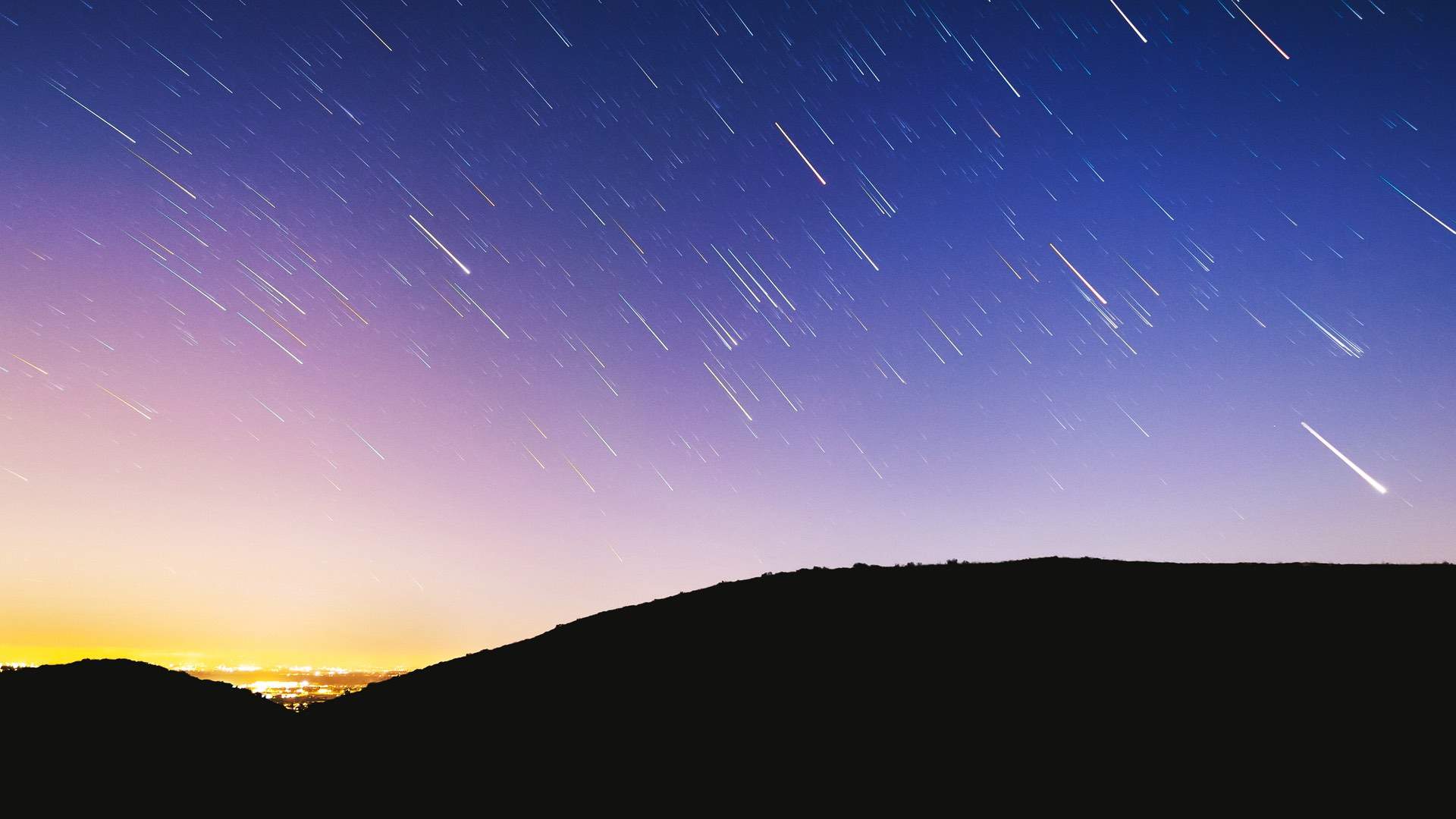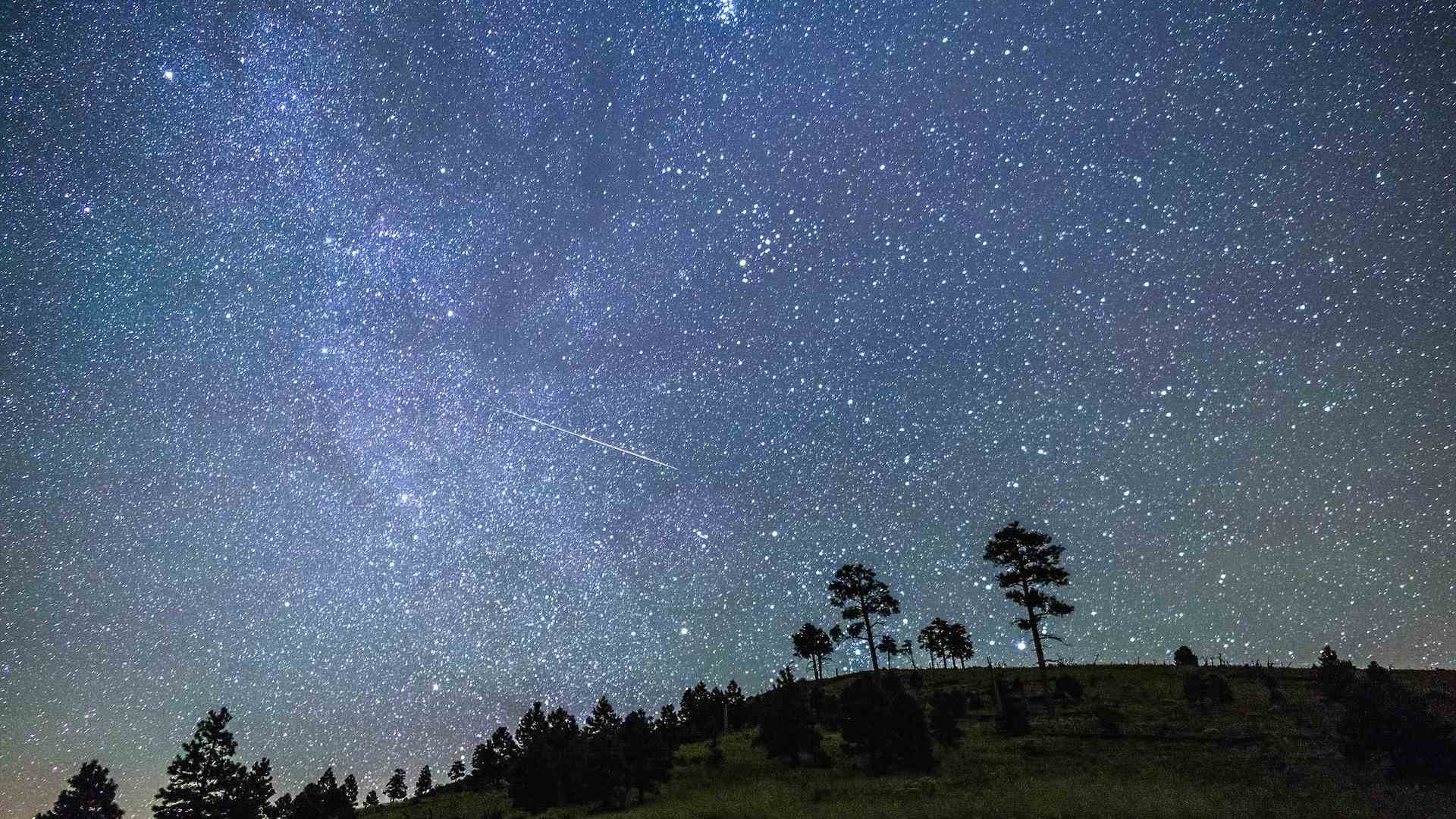The Impressive Eta Aquarids Meteor Shower Is Visible in Australia This Month
This spectacular starry event only happens once a year — here's how you can get a glimpse.
Sometimes, we're all looking onwards, upwards and forwards because we're thinking about the future. Given how normality as everyone knows it has changed and evolved rapidly over the past couple of years, that's hardly surprising. But don't forget to look up literally, too — especially when must-see sights keep gracing the night sky.
When it comes to vibrant astronomical visions, this is the latest in the space of a few short weeks, after the Lyrids meteor shower lit up the night back in April. Every autumn, the Eta Aquarids meteor shower sets the sky ablaze, too — and it's that time now.
This year, the shower will be at its most spectacular early on Saturday, May 7 — very early, in fact. If you're eager to catch a glimpse, even from just your backyard or balcony, here's how.

WHAT IS IT
The Eta Aquarids might not be as famous as Halley's Comet, but the shower is actually a distant relation — because the bits and pieces you see flying around were on Halley's path a really, really long time ago. And, rather than only being visible every 76 years (the next Halley's Comet sighting is in 2061), the Eta Aquarids come around every year, usually between April 19–May 28 every year. The shower's name comes from the star from which they appear to come Eta Aquarii, which is part of the Aquarius constellation. So, that's what you'll be looking for in the sky.
Luckily, being in the southern hemisphere, we get some of the best views in the world. On average, you can see up to 20–40 meteors per hour.

WHEN TO SEE IT
The shower will reach a peak in the early morning of Saturday, May 7, but will still be able to be seen for a few days on either side. The best time to catch an eyeful is just before dawn after the moon has set, so around 4am — but between 2am–6am is also recommended.
At that time, you'll be in the running to see as many as 50 meteors every 60 minutes. Each will be moving at about 225,000 kilometres per hour, shining extraordinarily brightly and leaving a long wake. The shower's cause is, essentially, the Earth getting in the comet's way, causing stardust to fry up in the atmosphere.
HOW TO SEE IT
Usually, when a meteor shower lights up the sky, we'd tell city-dwellers to get as far away from light pollution as possible to get the best view. If you can't venture out of town at the moment, you can still take a gander from your backyard or balcony.
To help locate the shower, we recommend downloading the Sky Map app — it's the easiest way to navigate the night sky (and is a lot of fun to use even on a non-meteor shower night). If you're more into specifics, Time and Date also has a table that shows the direction and altitude of the Eta Aquarids. It has been updating this daily.
The weather might get in the way of your viewing, though, depending on where you live. Melbourne is set for showers until next Monday, and Adelaide is as well until Saturday — fingers crossed that the wet weather takes a break during the early hours. It's also forecast to be wet in Brisbane until Friday, so here's hoping that any rain doesn't hang around till Saturday. In Sydney and Perth, however, sunny conditions await.






